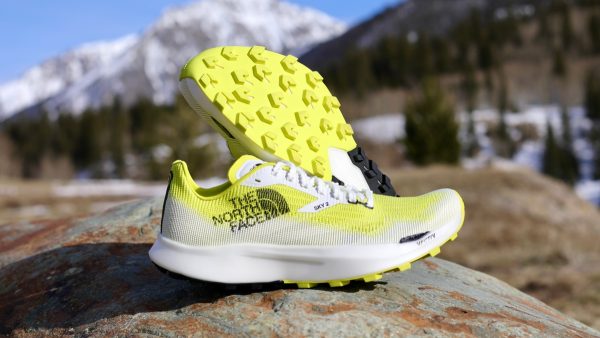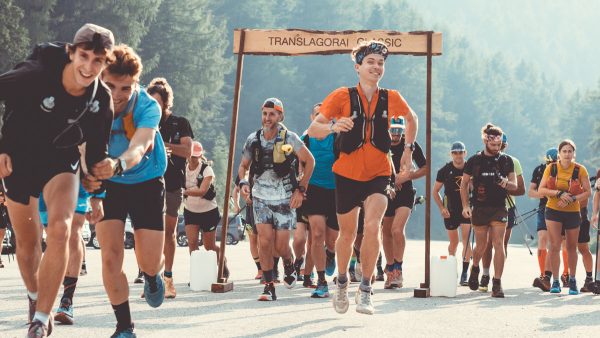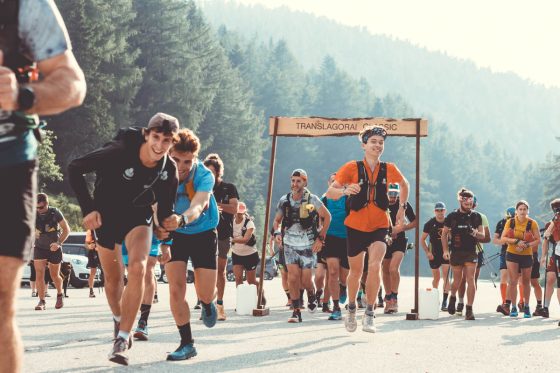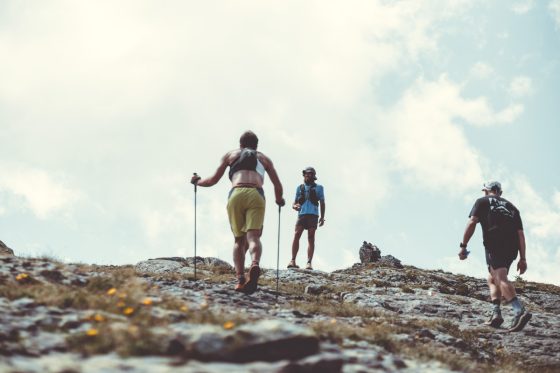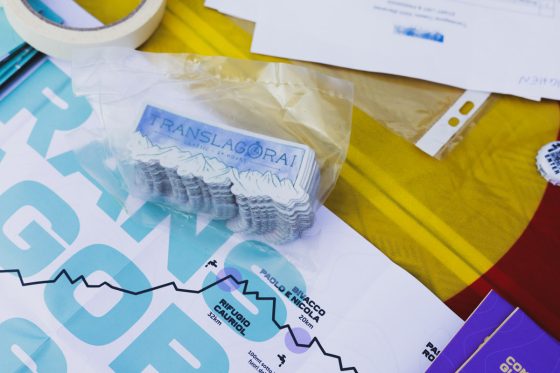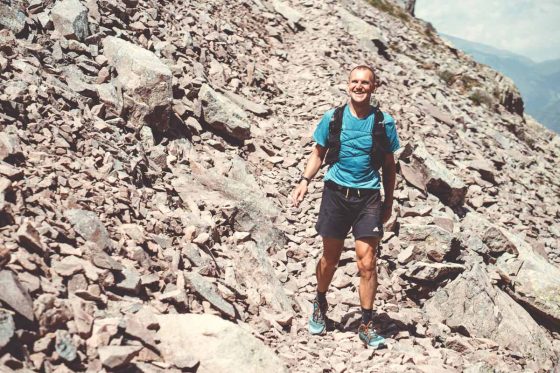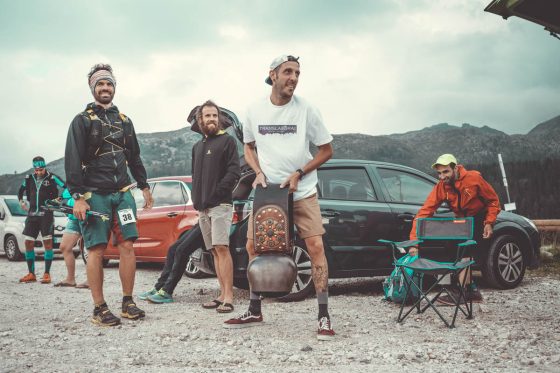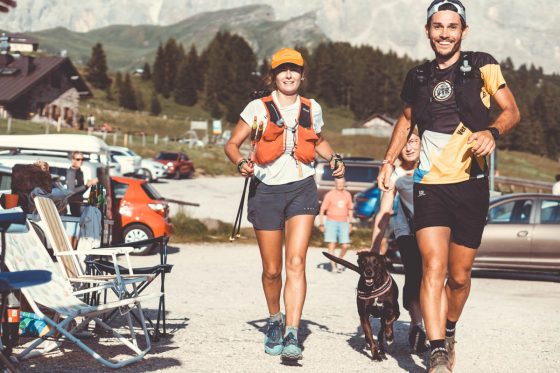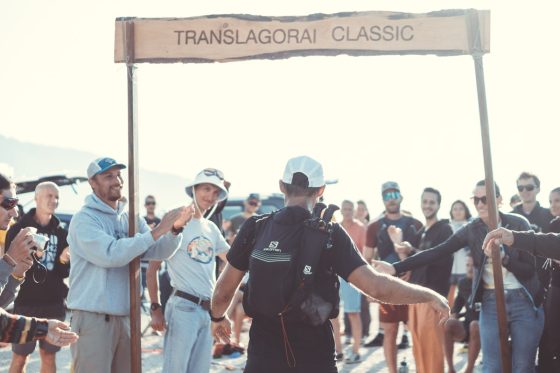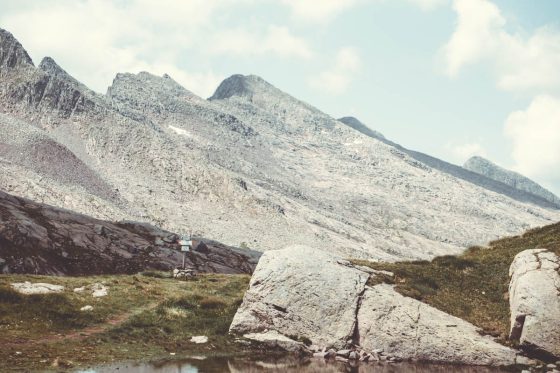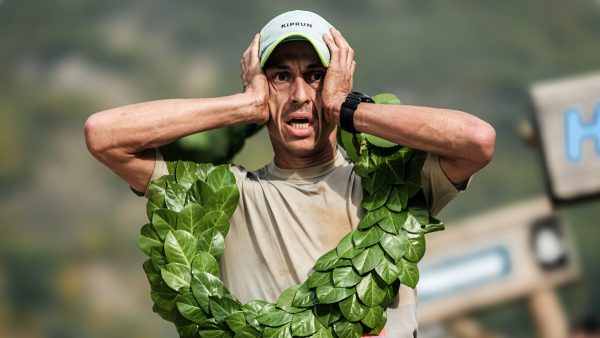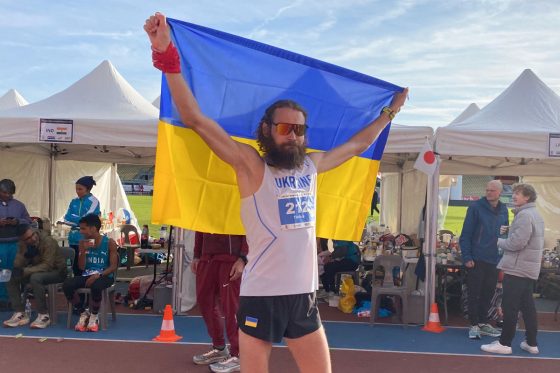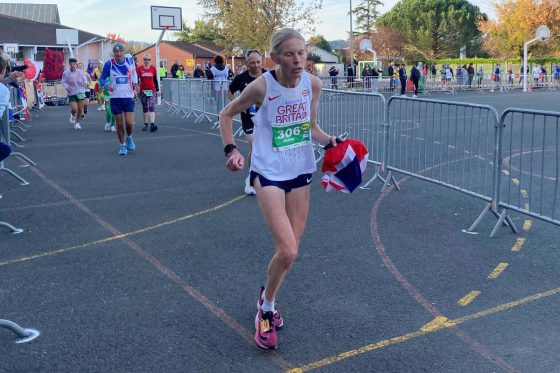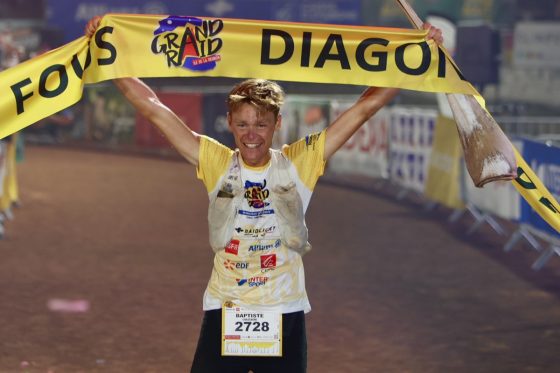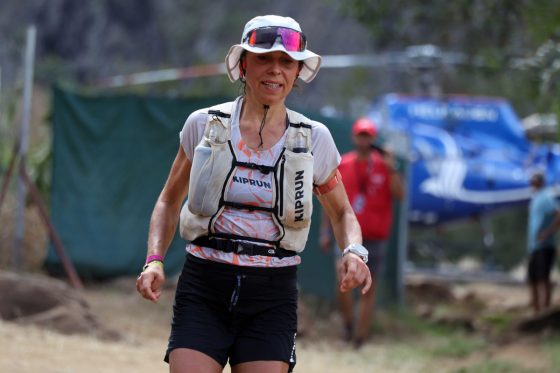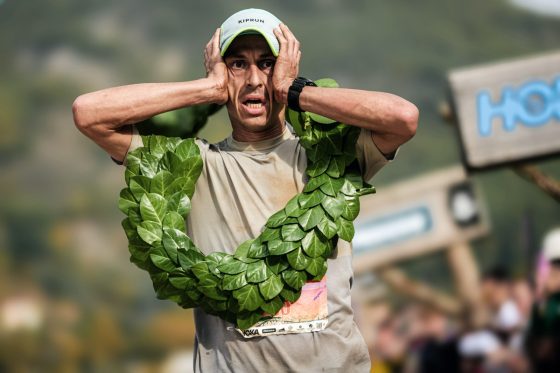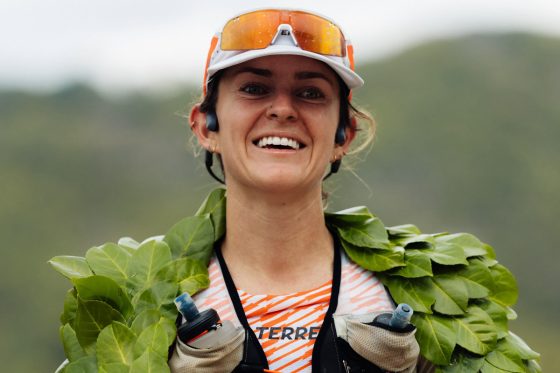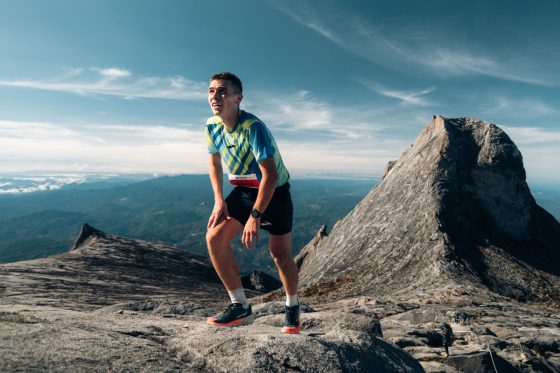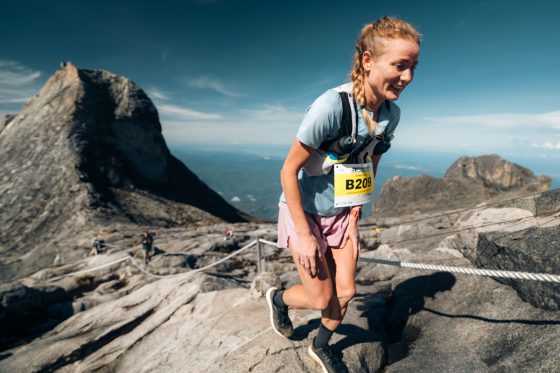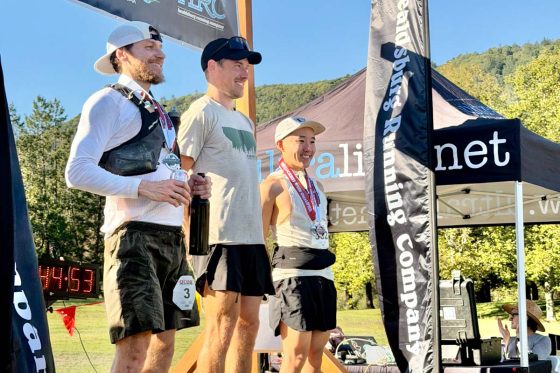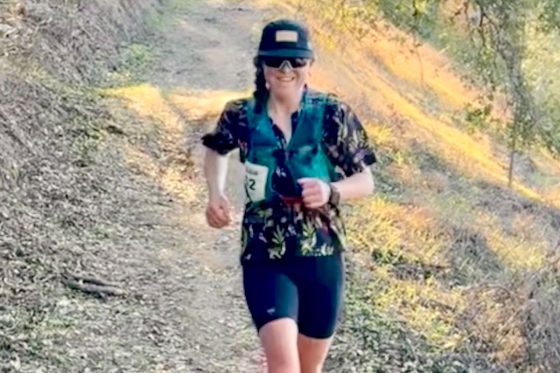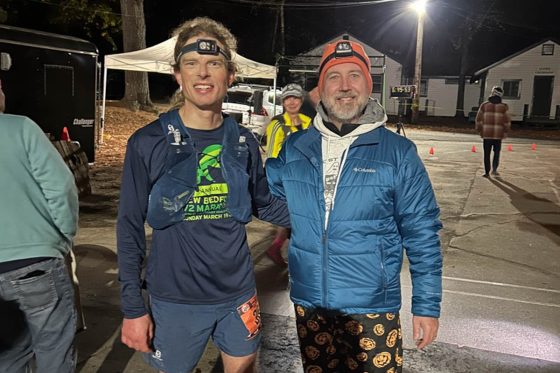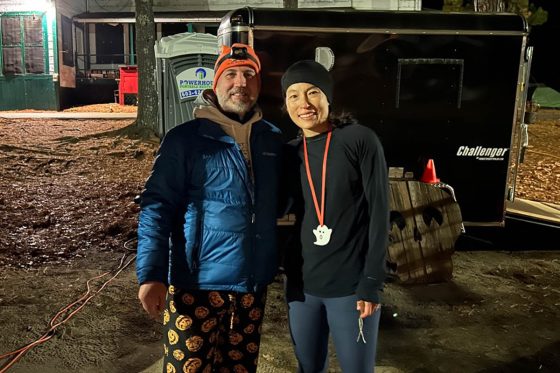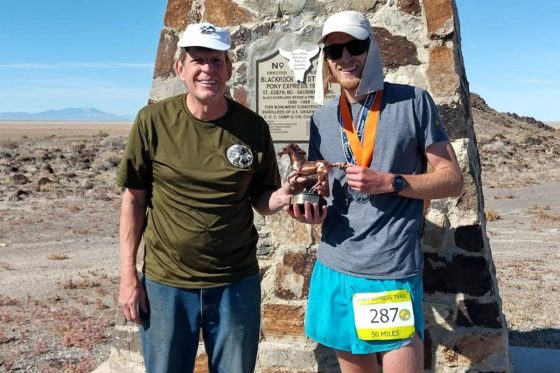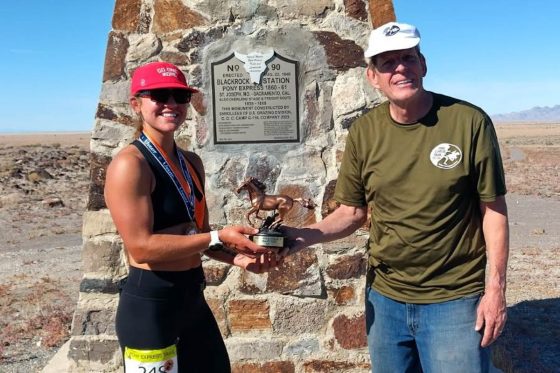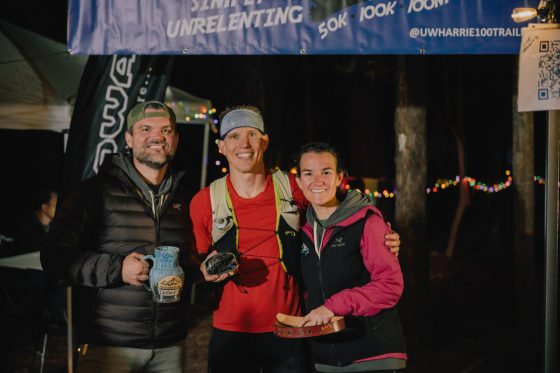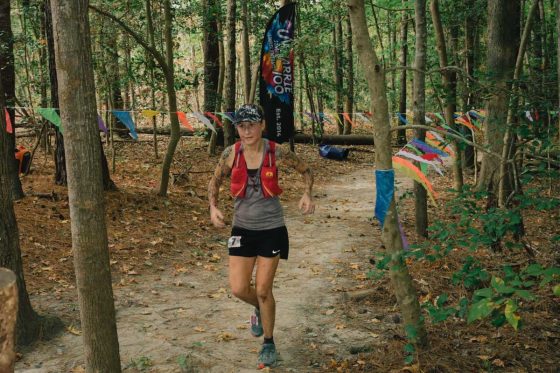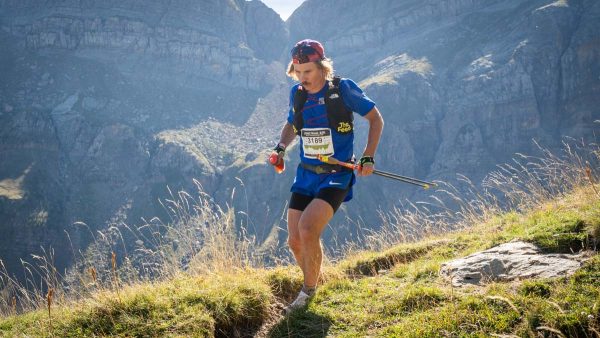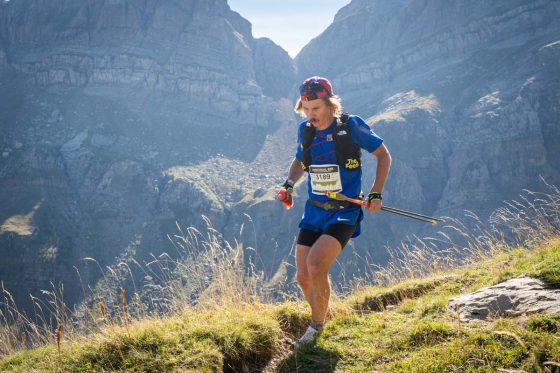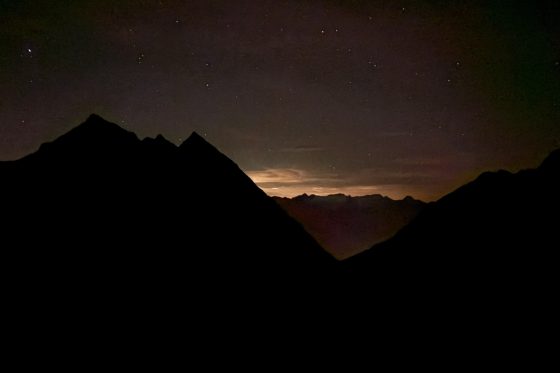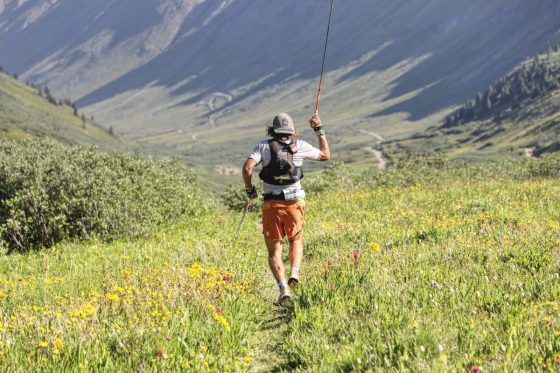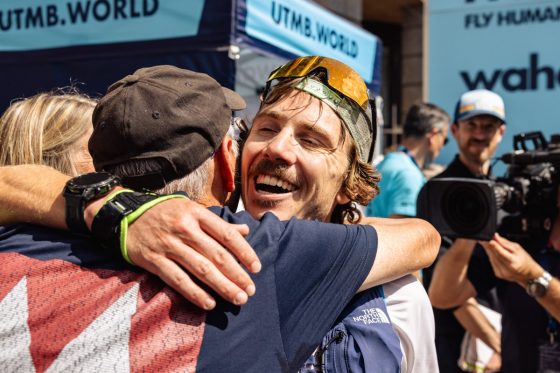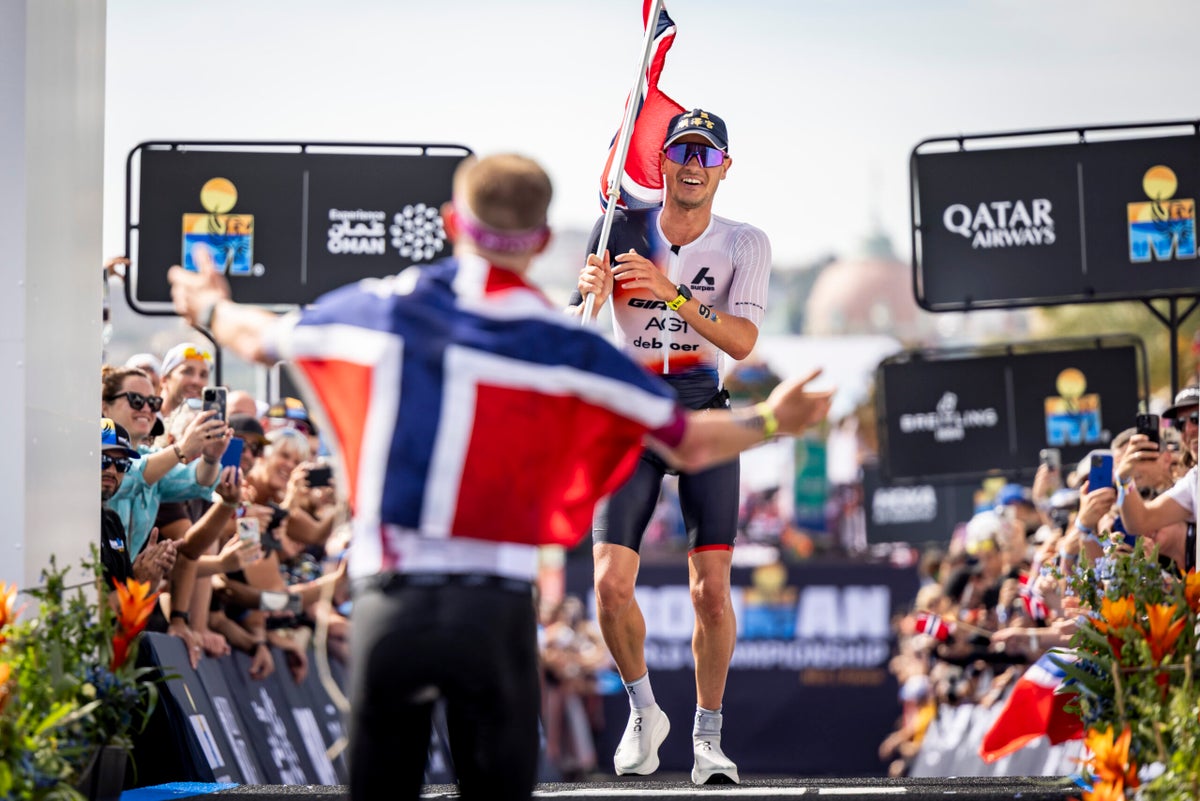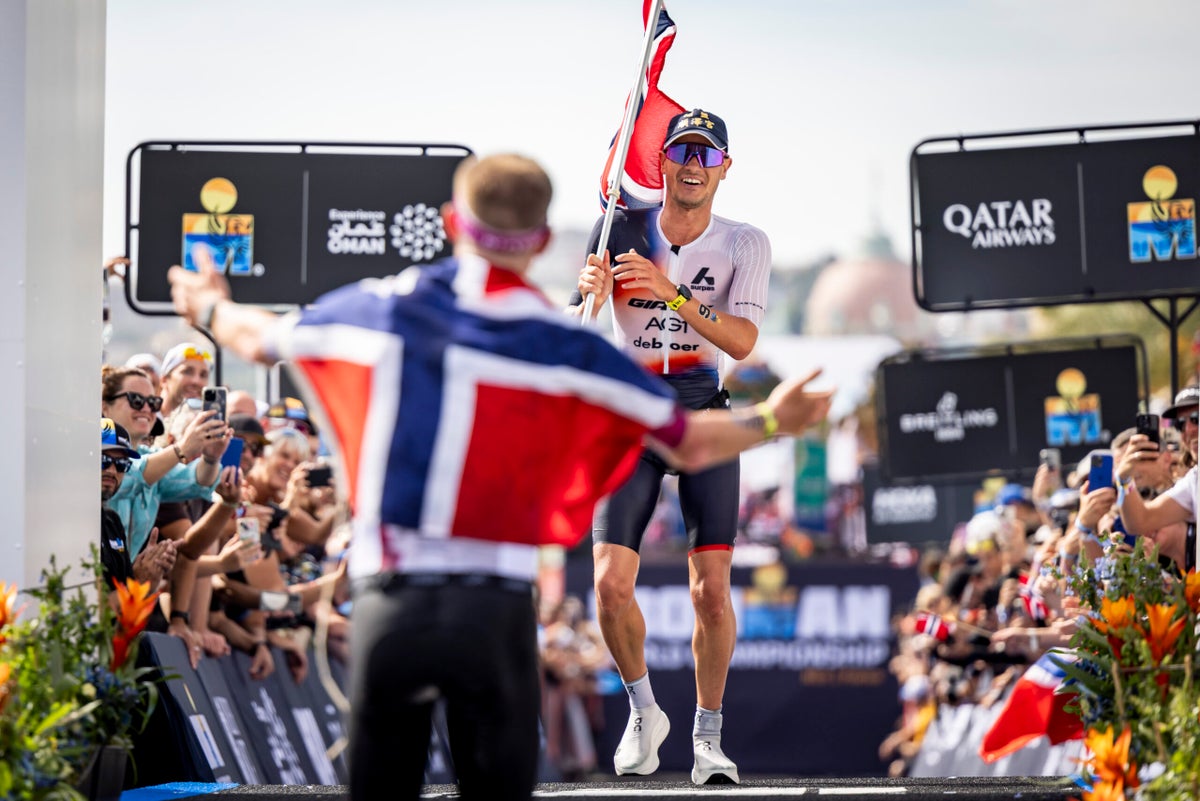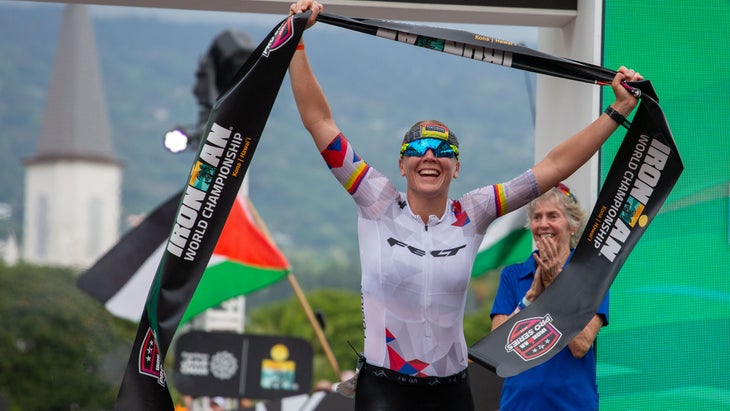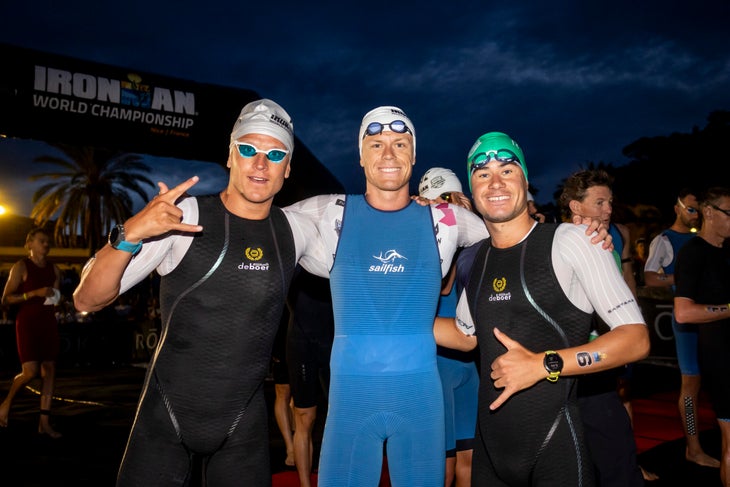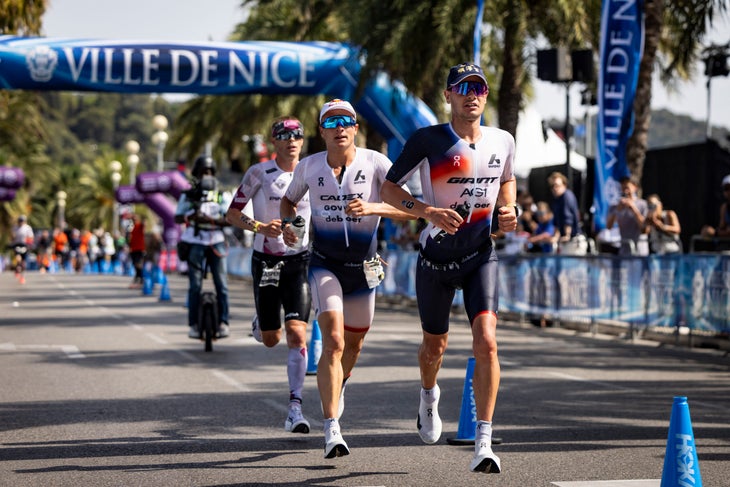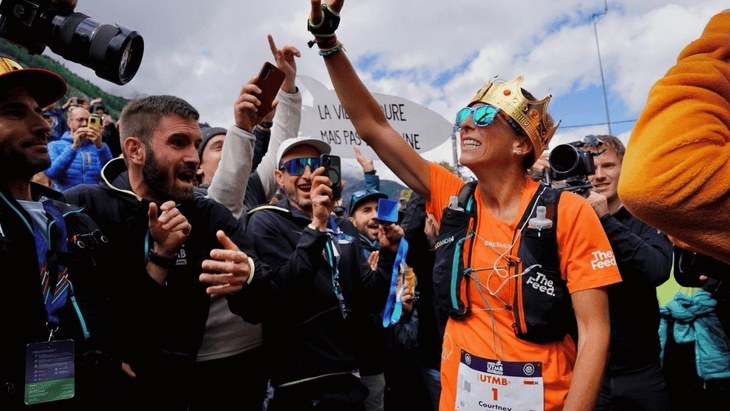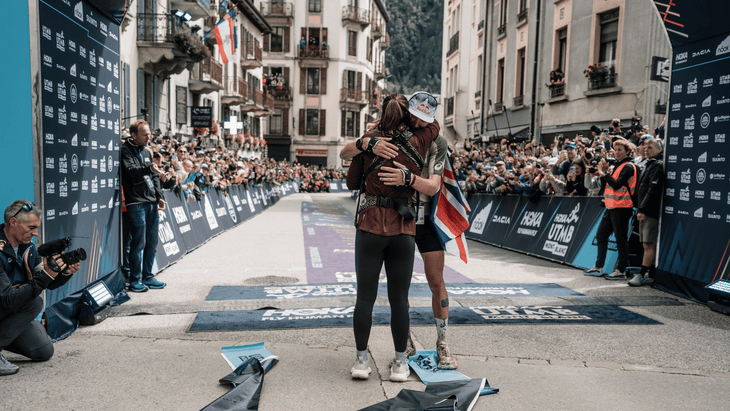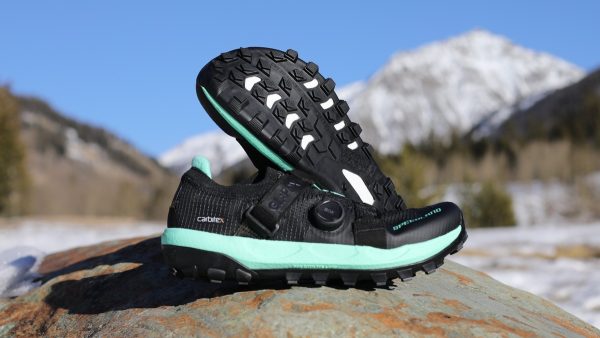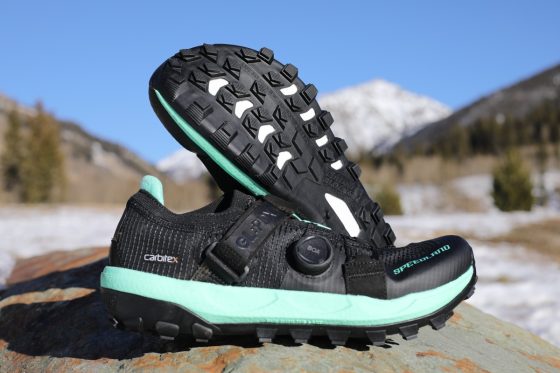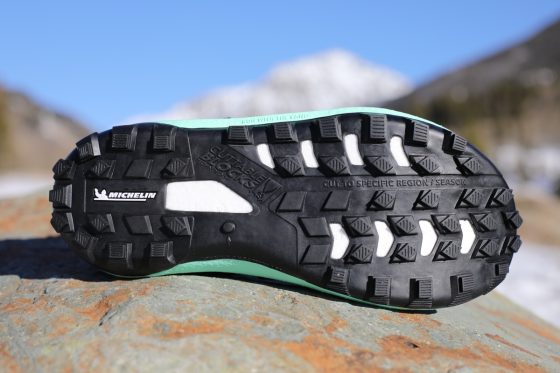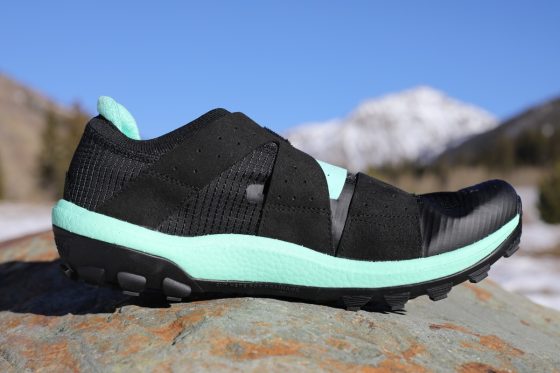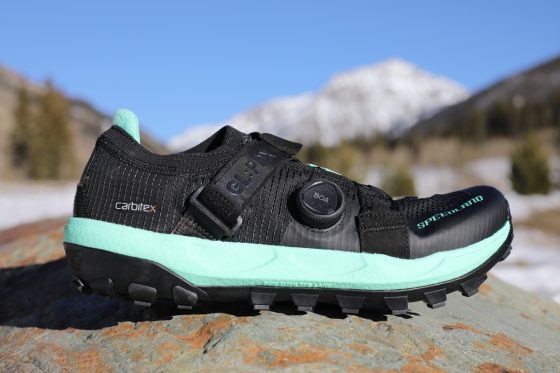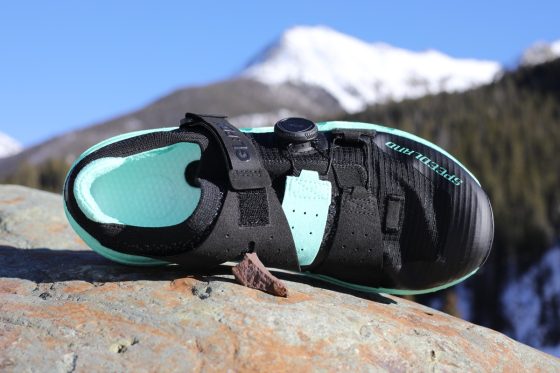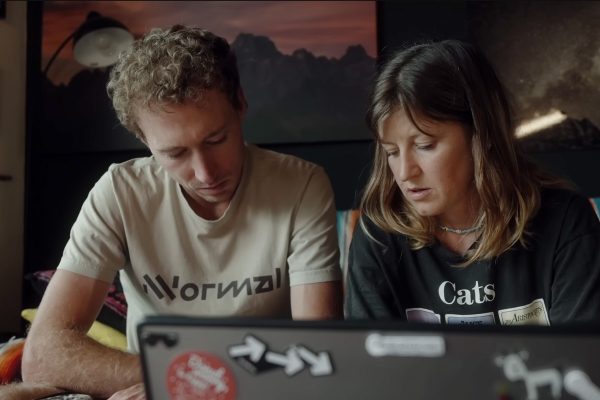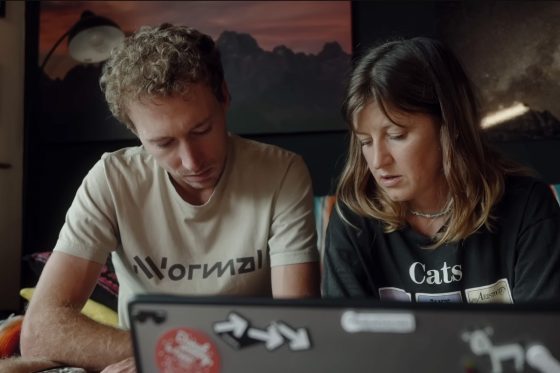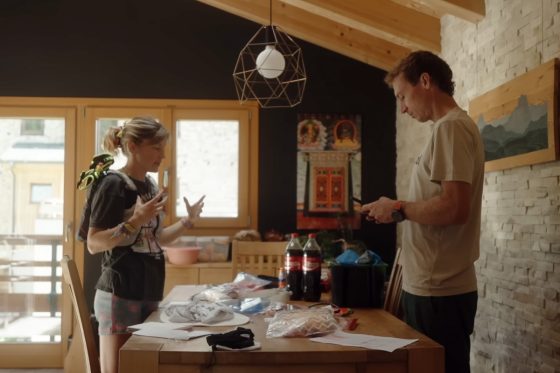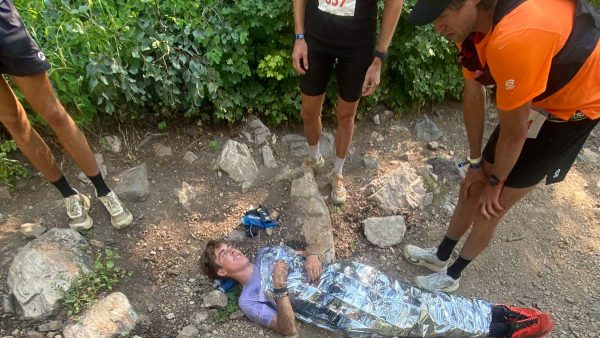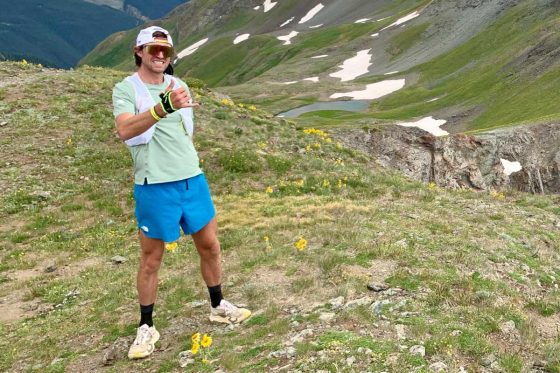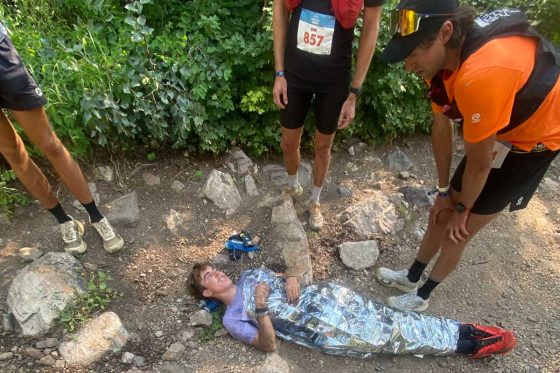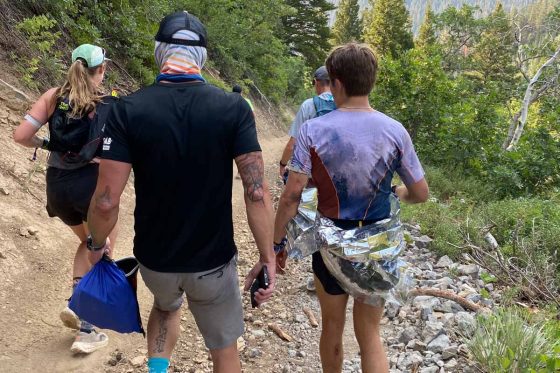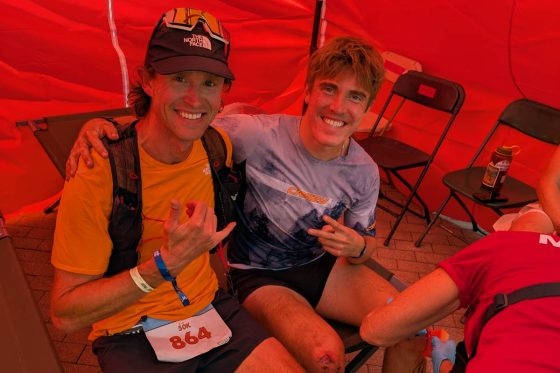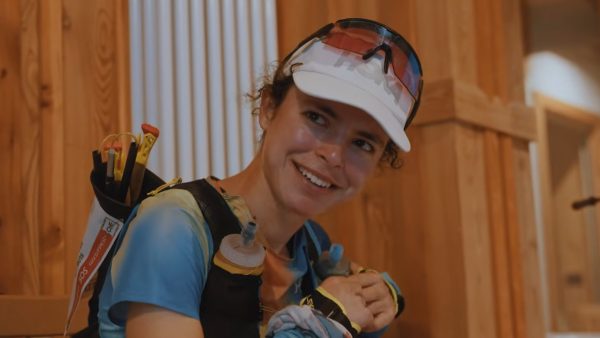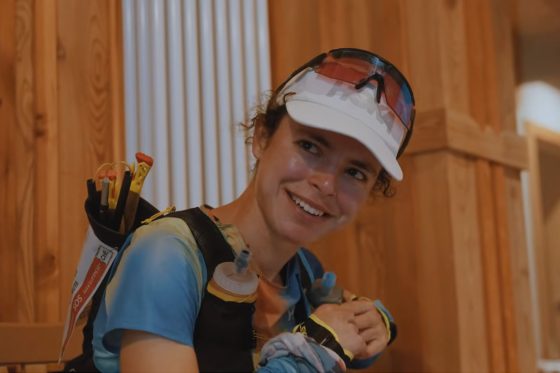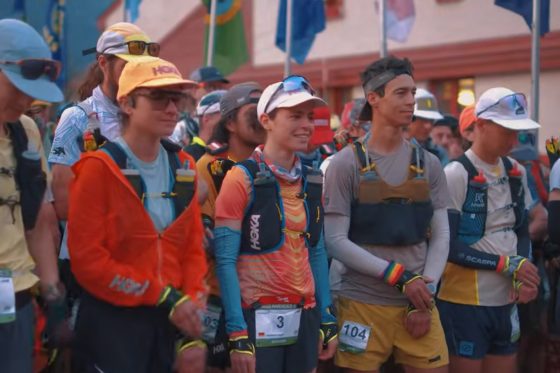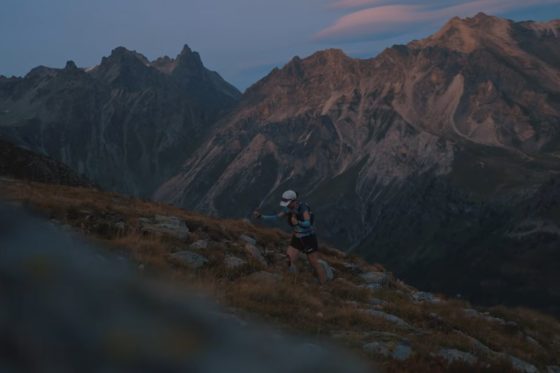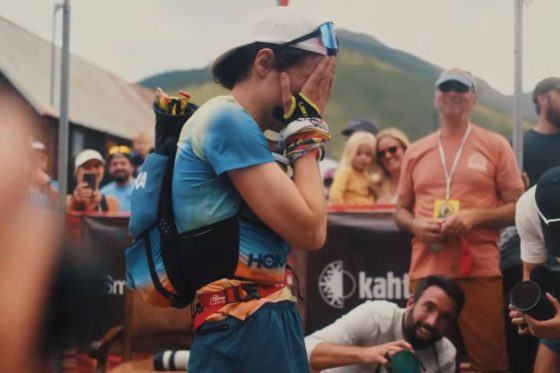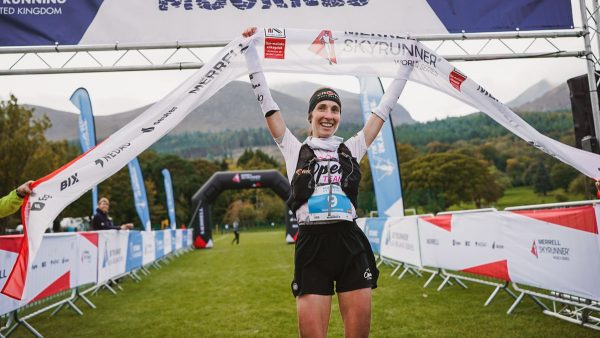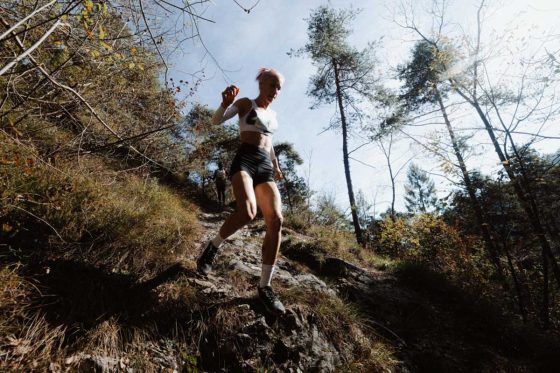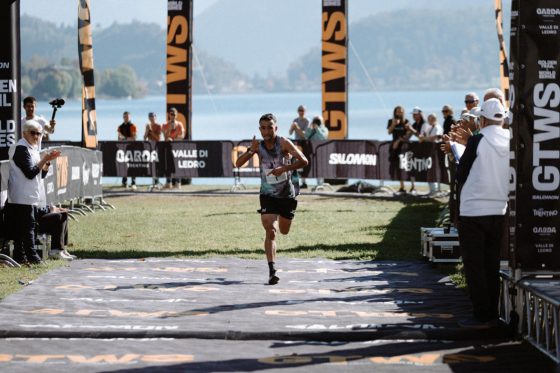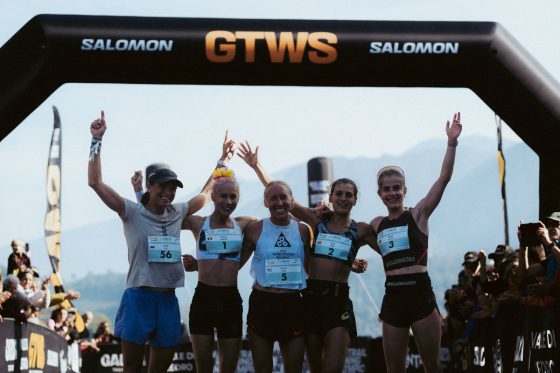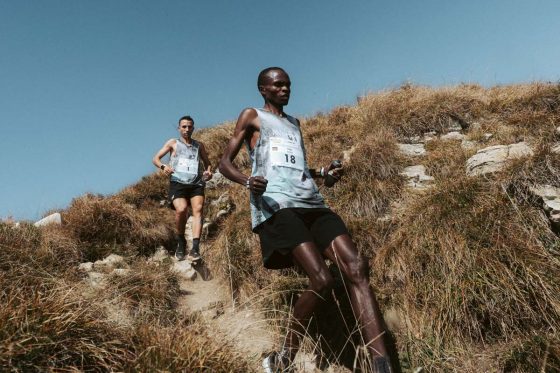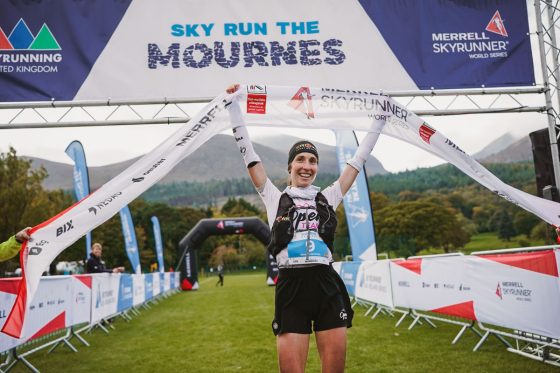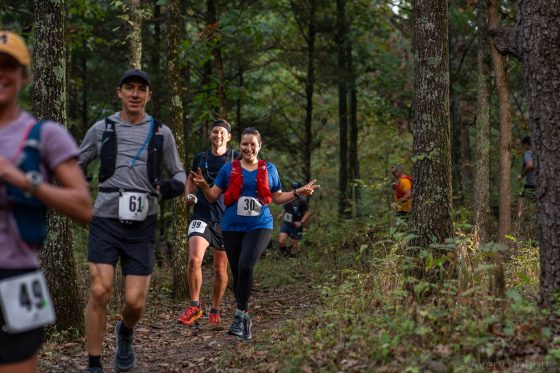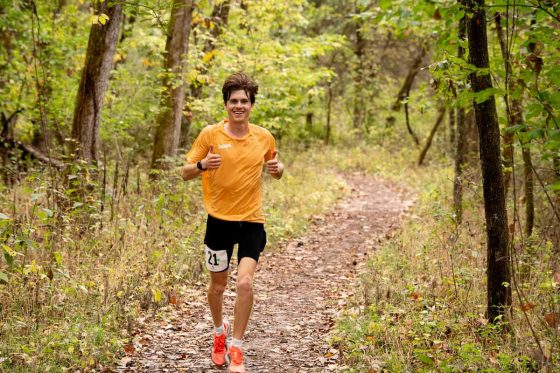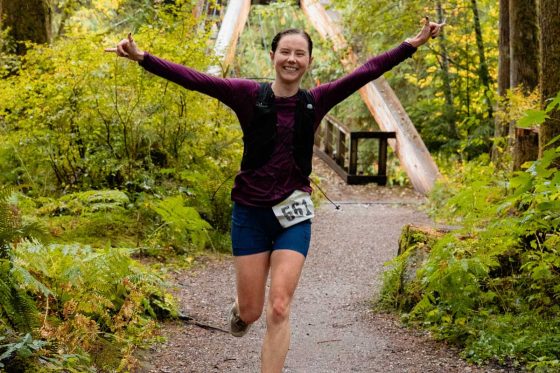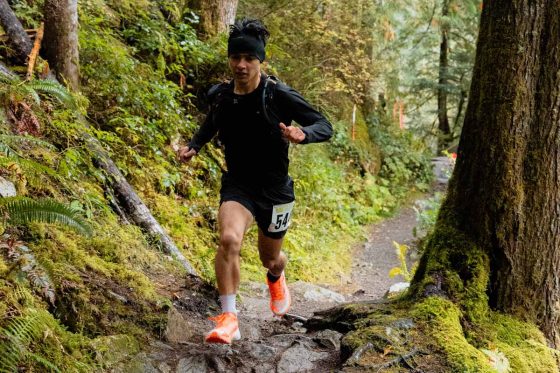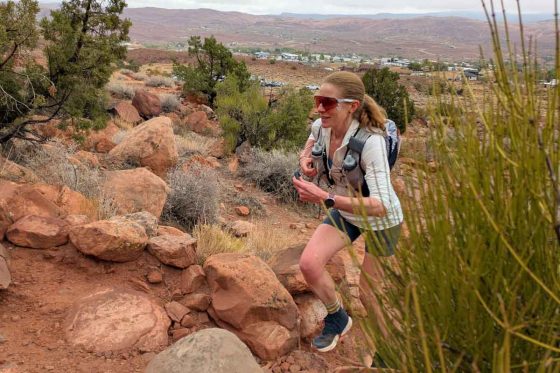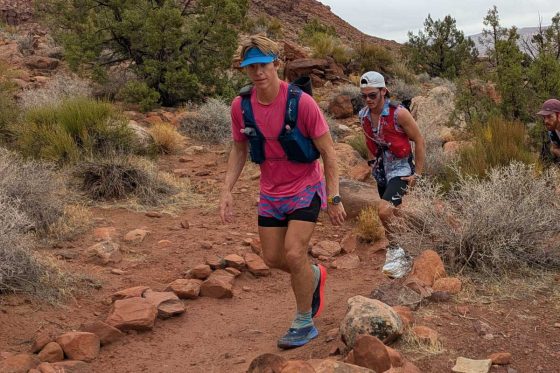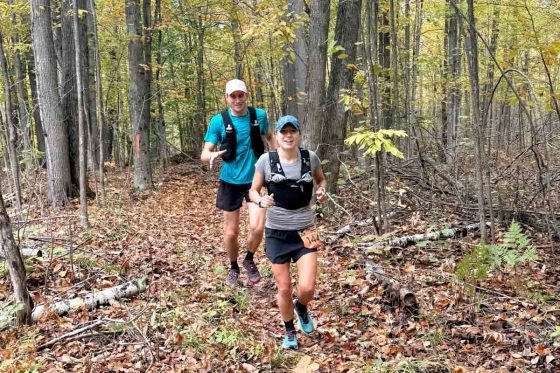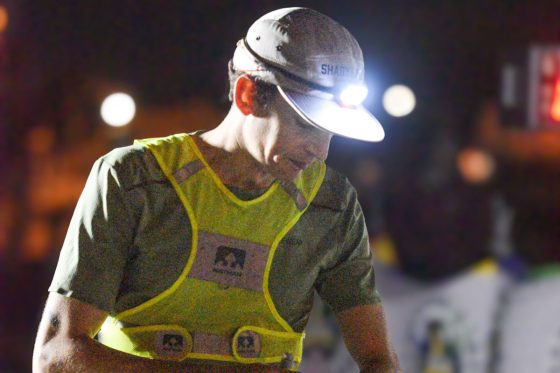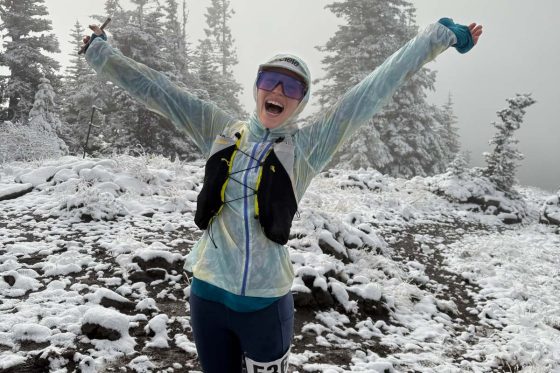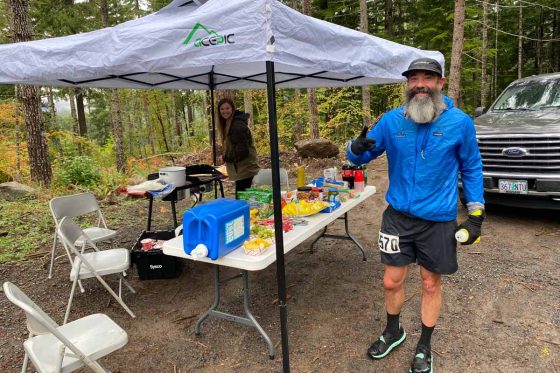The post Best Lightweight Trail Running Shoes of 2025 appeared first on iRunFar.
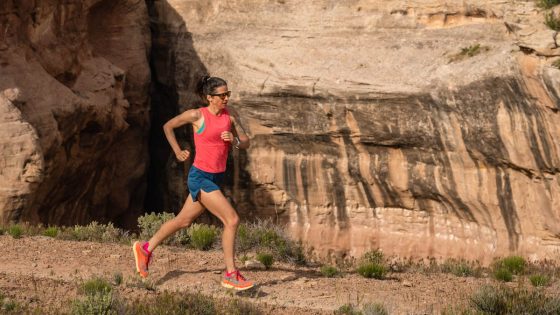
When finding the best lightweight trail running shoes, you want one that strikes a balance between being nimble, durable, and cushioned enough to be comfortable but light enough to let you fly. This guide shares the best lightweight trail shoes with an aim to keep the weight for a U.S. men’s 9 under 9 ounces, although two pairs snuck in just over that weight. Because the shoes here are very light, generally narrow, and with low-volume midsoles, many — but not all(!) — are not well suited for ultramarathon distances but are perfect for zooming up, down, and across everything from buttery singletrack to buttressed mountains.
We tested the shoes across various conditions and distances to determine which were best when speed was of the essence.
You can also learn more about finding the right lightweight trail shoes by jumping to our how-to-choose section.
Check out our best trail running shoes guide for more generalist trail shoes.
Best Lightweight Trail Running Shoes
- Best Overall Lightweight Trail Running Shoe: The North Face Vectiv Sky 2
- Best Lightweight Trail Running Shoe for Short Distance: Brooks Catamount Agil
- Best Lightweight Trail Running Shoe for Technical Terrain: VJ Lightspeed
- Most Comfortable Lightweight Trail Running Shoe: Norda 005
- Best Lightweight Trail Running Shoe for Up to 50k Distances: La Sportiva Prodigio Pro
- Best Lightweight Trail Running Shoe for Smooth Singletrack: Hoka Tecton X 3
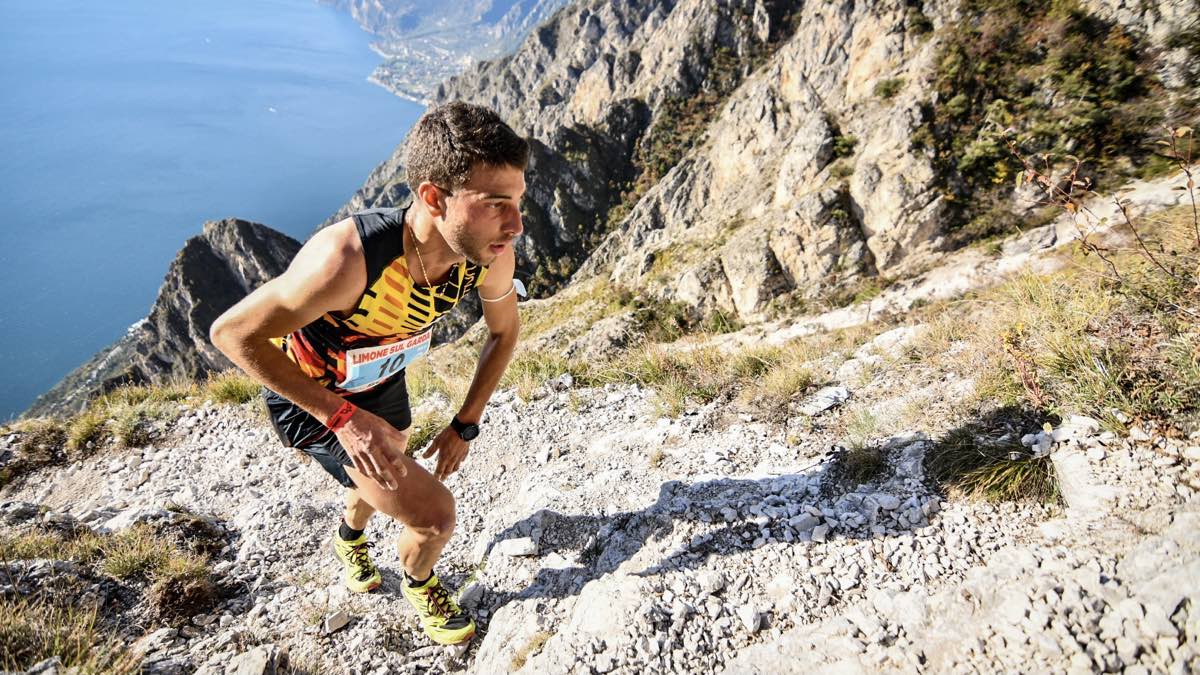
Best Overall Lightweight Trail Running Shoe: The North Face Vectiv Sky 2 ($200)
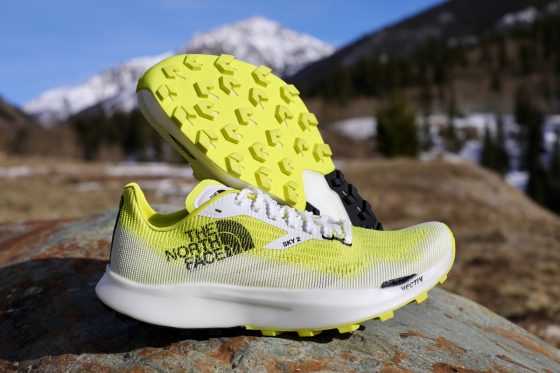
Actual Weight (U.S. men’s 9): 8.4 oz (238 g) | Stack Height: 28/22 mm heel/toe | Drop: 6 mm
Pros:
- Soft but poppy midsole
- “Just enough” lug pattern provides great ground feel while descending
Cons:
- Midfoot lockdown could be improved
- Ridiculously long laces
Though it launched with less fanfare than the hyper-stacked, super-shoe counterpart Vectiv Pro 3 ($250), The North Face Vectiv Sky 2 ($200) is arguably the stronger all-around trail racing shoe between the brand’s two premium options at the moment. That’s a bit ironic, considering the Pro line has historically been the more enjoyable option, while the original Sky fell short of expectations.
With the Sky 2, The North Face made two major changes to the upper. The tongue system has been improved and replaced with a thinner, more traditional gusseted tongue, resulting in a more secure and comfortable fit. The midsole also feels faster and more forgiving, elevating the ride quality compared to the first version.
The Sky 2’s midsole is constructed entirely from Dream foam, a nitrogen-infused TPU that delivers a smooth, propulsive sensation underfoot. It softens the ride noticeably while also reducing weight compared to the original. The shoe also features a forked Vectiv 3.0 carbon plate with three prongs that run independently along the left, center, and right through the forefoot. These prongs merge at the midfoot and extend as a single plate through the heel. The left and right arms even wrap slightly upward, forming stabilizing “wings” along the medial and lateral sides.
With a 6-millimeter drop (28 millimeter heel/22 millimeter forefoot stack height), the Sky 2 avoids the stability issues that plague higher-stacked models like the Vectiv Pro 3, which sits on a 40 millimeter heel. Despite being lighter than the original, the Sky 2 actually gained traction with deeper outsole lugs — now 5 millimeters, up from 3.5 millimeters — and a redesigned Surface Control rubber compound.
This shoe stands out from the pack for one simple reason — it’s fun, extremely fast, and highly effective to run in.
The midsole foam delivers an energetic ride, while the overall weight remains impressively competitive. Add in a remarkably capable outsole, and you’ve got a combination that makes this model hard to beat. A U.S. men’s 9 in the The North Face Vectiv Sky 2 has an actual weight of just 8.4 ounces (238 gram).
Watch out for our forthcoming full review of The North Face Vectic Sky 2.
Shop the The North Face Vectiv Sky 2 – Unisex
Best Lightweight Trail Running Shoe for Short Distance: Brooks Catamount Agil ($180)
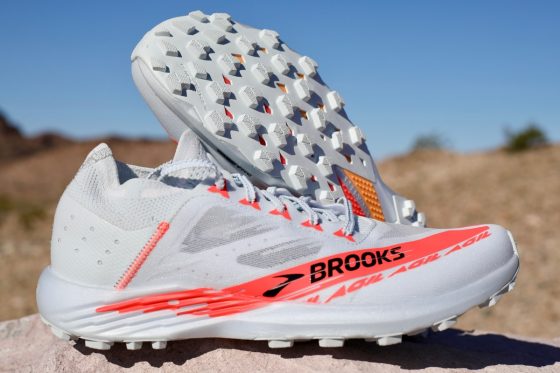
Actual Weight (U.S. men’s 9): 8.0 oz (226 g) | Stack Height: 16/10 mm heel/toe | Drop: 6 mm
Pros:
- Great close-to-ground feeling while descending
- Substantial lugs for a low-profile shoe
Cons:
- Forefoot too narrow for some runners
- Midsole unforgiving for distances over a half marathon
According to its maker, the Brooks Catamount Agil is its “fastest trail shoe, ever,” and after testing it on short, technical courses with steep climbs and descents, we couldn’t agree more. This isn’t a Caldera built for 100-mile ultras — it simply doesn’t have the weight or cushioning to protect your legs for that kind of pounding. But for shorter, punchy trail races where speed and agility matter most, it’s one of the best options out there.
What sets the Catamount Agil apart right away is how low it sits to the ground. With a stack height of just 16 millimeters in the heel and 10 millimeters in the forefoot — making for a 6 millimeter drop — it offers exceptional trail feel.
Instead of the familiar SkyVault carbon plate found in the Catamount 3, Brooks opted for a Pebax SpeedVault Trail Plate paired with their nitrogen-infused DNA FLASH v2 foam. This combination delivers a lively, propulsive ride with a surprising level of forgiveness for a plated shoe. Pebax, a polymer derived from castor beans, is lighter and more supportive than carbon, offering a smoother, more comfortable experience without sacrificing responsiveness.
Brooks also made a bold choice with the outsole. The Catamount Agil features 4.5-millimeter deep lugs — deeper than many lightweight trail shoes. While you might feel a slight rocking sensation standing still, once you’re moving downhill, those lugs provide exceptional grip and confidence. This outsole design gives it a major advantage over rivals like the Salomon S/Lab Pulsar 2, which skimps on traction in the name of weight savings.
Another reason the Catamount Agil excels in short-distance racing is its agility. Unlike many rigid-plated shoes that feel locked in one direction, the Agil naturally flexes and bends with quick side-to-side movements, perfect for technical trails with tight switchbacks or root-filled sections.
Fit-wise, the Agil strikes a great balance. The one-piece mesh upper wraps the foot precisely without being restrictive, and the lacing system locks in securely. For wide feet, the upper accommodates without feeling tight, though I’d recommend sizing up if you’re between sizes, as the overall fit leans narrow. Unfortunately, Brooks doesn’t offer this shoe in the half size between 12 and 13. Still, if in doubt, size up.
We have raced the Catamount Agil in trail races up to 12 kilometers, and it truly shines when the course is shorter but elevation gain and technical challenge are high — think vertical kilometers or fast trail half marathons. We often joke about low-stack, low-weight trail racing shoes that are like track spikes with lugs (remember the original Arc’teryx Norvan SL?). Well, in this guide, the Catamount Agil is that shoe. It would take an extremely nimble runner to use these comfortably on anything longer than 20- to 30-kilometer races.
Shop Brooks Catamount Agil – Unisex
Most Comfortable Lightweight Trail Running Shoe: Norda 005 ($325)
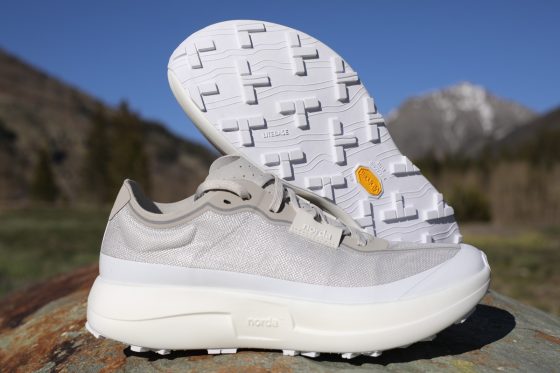
Actual Weight (U.S. men’s 9.5): 8.1 o (230 g) | Stack Height: 28.5/21.5 mm heel/toe | Drop: 7 mm
Pros:
- Midsole might be the most comfortable of any current trail shoe, lightweight or not!
- Vibram Megagrip Elite, currently exclusive to this shoe, is great on dirt roads
Cons:
- So damn expensive
- Less nimble descender than some other shoes in this guide
The Norda 005 ($325) is a standout in the lightweight trail racing category because it blends comfort, durability, and speed like few others. Unlike most super shoes, the 005 skips the carbon plate and opts for innovative materials that deliver a smooth, cushy ride without sacrificing responsiveness.
The key to its comfort is the midsole’s Arnitel TPEE foam, which offers great energy return while staying softer and more forgiving than typical trail super shoe foams. This creates a plush yet lively platform that cushions your feet on technical terrain and long efforts without feeling harsh or dead underfoot.
The shoe’s stack height is moderate — 28 millimeters in the heel and 21 millimeters in the forefoot for a 7-millimeter drop — which strikes the right balance between protection and ground feel. Unlike many bulky trail super shoes that feel unstable on descents, the Norda 005 stays nimble and confident on rocky, rooty downhills.
Up top, the Dyneema bio-based upper is both ultralight and incredibly durable. It’s breathable, sheds water well, and offers a glove-like fit that keeps your foot secure but comfortable. This combination of a protective upper and plush midsole makes the 005 a shoe you can wear all day, whether racing or training.
Outsole traction is another highlight. Vibram’s Megagrip Elite rubber, with a Tetris-like lug pattern, provides sticky, reliable grip across varied terrain, from fast fire roads to technical singletrack. The lugs are deep enough to bite but not so aggressive that they punish your calves on longer runs.
For runners who prioritize comfort without sacrificing weight or performance, the Norda 005 is an exceptional choice. It’s durable, supportive, and cushioned enough to tackle tough terrain with confidence, all while weighing less than many traditional trail shoes. The step-in feel is unlike any shoe in this guide, the perfect plushness with efficiency.
Watch or read our full Norda 005 review.
Shop the Men’s Norda 005Shop the Women’s Norda 005
Best Lightweight Trail Running Shoe for Technical Terrain: VJ Lightspeed ($200)
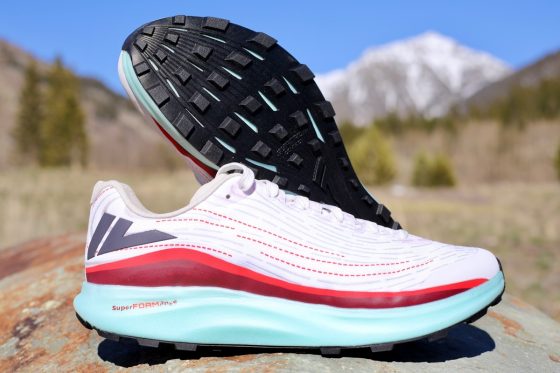
Actual Weight (U.S. men’s 9): 8.4 oz (238 g) | Stack Height: 29/23 mm heel/toe | Drop: 6 mm
Pros:
- Perfect midsole mix of foam and plate makes for a very propulsive ride
- Excellent lockdown
Cons:
- Requires more skill to descend confidently (even with great grip)
- Narrow upper for some runners
The VJ Lightspeed ($200) is one of the lightest trail shoes available for runners who like very technical terrain. The underfoot sensations are light, bouncy, and fast — and at just 8.4 ounces (238 grams) for a U.S. men’s size 9, the weight backs up that feeling. But like most of the shoes in this guide, the Lightspeed demands keen proprioceptive awareness and strong ankle and foot control to maximize the experience. It is a very narrow shoe designed for mid-to-forefoot runners who aim for quick and minimal ground contact time.
What really sets the Lightspeed apart on technical trails is its exceptional outsole traction. VJ’s proprietary butyl-rubber outsole delivers some of the stickiest grip you’ll find on any trail shoe, holding firm on wet rocks, loose gravel, and roots. The 3.5-millimeter square lugs are a smart balance — not overly aggressive but enough to bite into loose and uneven surfaces without packing mud. Narrow outsole slits provide natural flexibility, allowing the shoe to adapt to quick directional changes and maintain contact with the trail.
Underfoot, the shoe combines a nitrogen-infused SuperFOAMance midsole with a Y-shaped Pebax propulsion plate. This setup offers a springy ride with the right mix of cushioning and stability. The plate adds torsional support, helping your foot stay steady and responsive. Together, they promote the fast and agile footwork needed for fast running on technical terrain.
The fit is another critical factor. The snug upper is made of a thick Kevlar-based material that wraps the foot very securely. The FitLock midsole wrap enhances midfoot lockdown, preventing unwanted foot movement during sharp turns or sudden balance shifts.
In races, we’ve noticed the shoe’s superior grip and responsive support allow you to attack technical descents confidently. For experienced trail runners seeking a lightweight, precise racer that thrives on technical terrain, the VJ Lightspeed is hard to beat. Overall, the Lightspeed offers an exceptional blend of speed and control for runners with the foot strength and skill to maximize its technical running potential.
Read our full VJ Lightspeed review.
Best Lightweight Trail Running Shoe for Up to 50k Distances: La Sportiva Prodigio Pro ($225)
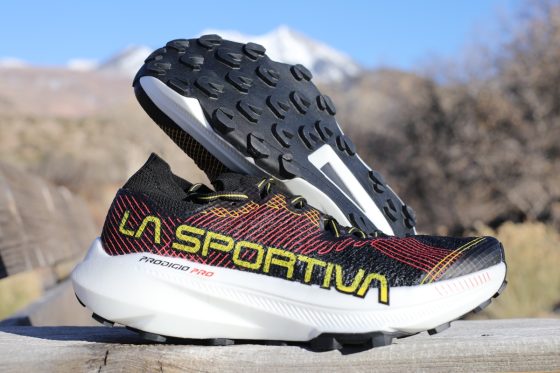
Actual Weight (U.S. men’s 9.5): 9.4 oz (267 g) | Stack Height: 34/28 mm heel/toe | Drop: 6 mm
Pros:
- Similar but more stable ride than carbon-plated shoes
- Great rockered design
Cons:
- Bulkier and heavier than other shoes in this guide
Longtime La Sportiva acolytes were caught off guard with the launch of the original Prodigio and even more so by the La Sportiva Prodigio Pro. Never before has La Sportiva offered such a soft midsole foam, an exaggerated rocker, and its signature sticky rubber in the same package. And on top of all that, the fit was even a bit forgiving, offering non-narrow-footed folks a chance to slip into its glove-like upper without consternation.
This shoe really hits a sweet spot between cushioning, responsiveness, and durability — while still feeling light enough to keep you quick and agile on technical terrain.
Alongside the Hoka Tecton X 3, the Prodigio Pro is about as “maximal” as things get in this guide. With a 34-millimeter stack height under the heel and 28 millimeters at the toe for a 6-millimeter drop, it’s got more stack and a burlier build than most of the svelte racers out there, which makes it all the more surprising that it tips the scales at just 9.4 ounces actual weight for a U.S. men’s 9.5 (equivalent in size to our standard U.S. men’s 9). You wouldn’t immediately peg it as a lightweight option, but it absolutely belongs in that conversation. While it can hang on steep, technical courses, the Prodigio Pro really comes alive on smooth, rolling trails where the rocker geometry lets you flow. And thanks to the FriXion XF 2.0 outsole, you still get that signature La Sportiva bite over pretty much any surface.
The midsole is where things get really interesting. At the heart of the Prodigio Pro is La Sportiva’s XFlow Speed, which ditches the usual carbon plate in favor of a nitrogen-infused TPU core wrapped in an EVA+NITRO cage. The result is a ride that feels springy and propulsive but without the stiffness or instability you sometimes get in plated shoes. It’s responsive enough to race fast, yet forgiving enough to keep your legs intact deep into a 50k.
Up top, the Power Wire knit-looking upper locks your foot down securely, while the knit collar adds both ankle comfort and debris protection. The fit stays snug and supportive, but — rare for La Sportiva — the toebox gives you room to splay out and swell a bit on longer days.
The Prodigio Pro has been described as feeling like a “super shoe” without the plate. It delivers real energy return and protection without beating you up. True to La Sportiva form, durability is a strength: This is a shoe built to last through many racing seasons.
Read our full La Sportiva Prodigio Pro review.
Shop the Men’s La Sportiva Prodigio ProShop the Women’s La Sportiva Prodigio Pro
Best Lightweight Trail Running Shoe for Smooth Singletrack: Hoka Tecton X 3 ($275)
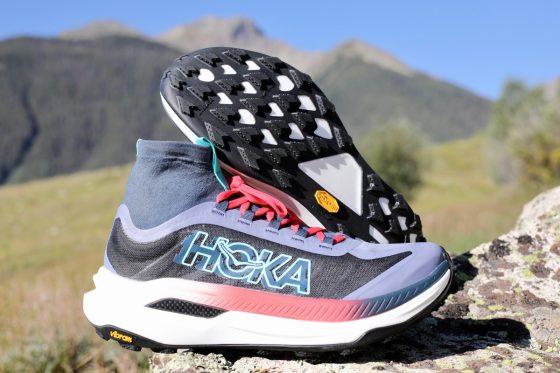
Actual Weight (U.S. men’s 9): 9.3 oz (265 g) | Stack Height: 40/35 mm heel/toe | Drop: 5 mm
Pros:
- Enjoyable midsole bounce at speed
- Deep Vibram lugs provide great grip over many conditions
Cons:
- Built-in gaiter can be a deal breaker for many runners
- Midsole provides the tippiest ride of any shoe in the guide
The Hoka Tecton X 3 is built for speed on smooth, flowing singletrack, offering the rare combination of light weight, plush cushioning, and reliable protection. Now in its third version, the shoe benefits from refinements shaped by elite athlete feedback, and it feels more polished and versatile than ever.
With an actual weight of 9.3 ounces for a U.S. men’s 9, the Tecton X 3 balances a 5-millimeter drop and generous 40-millimeter heel stack height and 35-millimeter forefoot stack with surprising agility. The PEBA midsole layers provide a cushioned, energetic feel, while two parallel carbon plates add a snappy, propulsive response. Unlike many plated shoes that can feel overly stiff or unstable, the plates here flex independently, giving the shoe both drive and stability when the trails get uneven. It feels powerful without being demanding, and smooth without being dull — a rare balance in the plated trail category.
The biggest update is the Matryx upper, which now includes a knit gaiter that wraps around the ankle and tongue. This detail keeps grit and pebbles out, a small but meaningful improvement for anyone who’s had to stop mid-run to shake out debris, although any integrated gaiter is a drawback for some users. The upper offers a snug and secure fit through the midfoot while leaving enough room for comfort on longer days. Some testers found it a touch less precise on highly technical terrain, but on its intended surface — smooth, rolling singletrack — it hits the mark.
Traction comes from a Vibram Megagrip Litebase outsole with redesigned 4-millimeter lugs. The pattern provides confident grip on both wet and dry trails, with better braking on descents compared to earlier versions, yet never feels overly aggressive on firm ground.
Over the long term, the Tecton X 3 feels fast, springy, and stable — an ideal combination for runners who want to push the pace without sacrificing comfort over long distances. It’s equally at home in race scenarios and long training runs, offering the durability to handle heavy mileage while still feeling like a true performance shoe. For smooth singletrack where speed is the goal, this is Hoka at its best.
Our full review of the Hoka Tecton X 3 is on its way.
Shop the Men’s Hoka Tecton X 3Shop the Women’s Hoka Tecton X 3
Comparing the Best Lightweight Trail Running Shoes
| SHOE | PRICE | WEIGHT | DROP |
| The North Face Vectiv Sky 2 | $200 | 8.4 ounces | 6 millimeters |
| Brooks Catamount Agil | $180 | 8.0 ounces | 6 millimeters |
| Norda 005 | $325 | 8.1 ounces | 7 millimeters |
| VJ Lightspeed | $200 | 8.4 ounces | 6 millimeters |
| La Sportiva Prodigio Pro | $225 | 9.4 ounces | 6 millimeters |
| Hoka Tecton X 3 | $275 | 9.3 ounces | 5 millimeters |
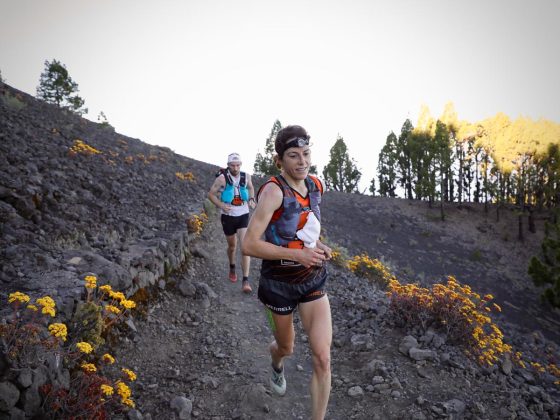
Why and How to Choose a Lightweight Trail Racing Shoe
The shoes in this guide are best for shorter trail runs and races, such as vertical kilometers, half marathons, marathons, 50-kilometer races, and most skyrunning-style races where speed is more important than comfort. Stack height and heel-to-toe drop in lightweight shoes tend to be lower since ground feel is very important for moving fast over technical trails. The innovations that have poured over into trail running shoes from its cousins on the road — like super foams and carbon plates — can work in lightweight trail racing shoes, but there are fairly limited standouts to date.
For some of these shoes, their relative lack of comfort and cushion limits them to particular course lengths and types of terrain. Know your shoe’s characteristics and the race course terrain, and choose accordingly. A shoe like the Brooks Catamount Agil would provide quite a beating if worn for distances longer than a marathon or 50k.
Also, remember that these lightweight trail shoes aren’t just for races! For those of us whose daily run doesn’t often exceed 10 miles, you could log many or even most of your runs in these shoes. Even if you are not looking for the best trail racing shoes, consider the shoes in this guide perfect for daily training runs when you prefer faster-feeling shoes with a more streamlined design. For example, you would be hard pressed to find a more fun and faster shoe for virtually any run than the Norda 005, though its extremely high cost may have you from saving it just for race day. Testers found the Hoka Tecton X 3 comfortable enough for day-to-day running.
If you’re looking for more information on trail running shoes that provide more comfort and are better suited to everyday running, check out our Best Trail Running Shoes guide. If you’re looking for even more comfort, take a look at our Best Cushioned Trail Running Shoes guide for shoes that will put plenty of bounce in your step.
Weight
How low should you go when choosing the best lightweight trail running shoes for your feet? All the shoes in this guide are 9.5 ounces or less, but their degrees of lightness vary greatly. If the average ultrarunning shoe is around 10 ounces, then the eight-ounce Brooks Catamount Agil will feel like an entirely different shoe class.
While all the shoes in this guide are very light, they have different enough characteristics to make them feel significantly different. You might opt for a slightly heavier shoe, such as the La Sportiva Prodigio Pro, because of preferences for the midsole or the more aggressive outsole, or you might opt for the very lightest option because that’s what’s important to you.
A weight limit is a good benchmark when selecting a lightweight trail racing shoe, but there are many more elements to consider, and we chose a good cross-section of shoes with multiple features besides being light.
Some of the shoes in this guide are almost 50% lighter than normal trail running shoes. Does that make the best lightweight trail shoes minimalist? Not at all. These lightweight trail running shoes are indeed light, but that’s where the minimalist comparisons end. Many of these shoes are cushioned, grippy, durable, and robust. In fact, the Hoka Tecton X 3 and La Sportiva Prodigio Pro are fully maximal shoes at fairly minimal weights.
Comfort
Are any of these shoes actually comfortable? Unfortunately, many of this guide’s best lightweight trail running shoes will not win a “most comfortable” competition if you compare them to shoes made for going super long, whether in ultramarathons or all-day adventure runs.
Most of these shoes are narrow and wide-footed runners, or those with bunions, may question which is least uncomfortable rather than choosing something particularly enjoyable to wear. The shoes here aren’t minimalist in the vein of barefoot trail running shoes, and many are actually very neutral in gait, but all are generally narrow and tough on runners with wide feet and feet prone to swelling during a long run. This is more of an issue regarding the upper and shape of these shoes rather than the midsole feel, the latter of which is fairly outstanding in all the shoes in this guide.
All that being said, The North Face Vectiv Sky 2 is a reasonably comfortable shoe, especially for a lightweight one, and the La Sportiva Prodigio Pro has a wider and more comfortable fit than many other shoes from the brand.
Durability
While durability for short trail races and quick training isn’t as important as for a 100-mile race, it is still something to consider. All the shoes tested proved nearly as durable as their heavier counterparts.
The real innovation here is that so many brands can merge cushy midsoles into lightweight shoes. To our delight, the shoes in this guide maintained the midsole ride as much as heavier shoes we’ve tested.
In general, upper durability is not as important as the midsole and outsole when choosing the best lightweight trail running shoes, but it is still a factor. The uppers of these shoes are excellent, and we didn’t find any to wear excessively quickly. Still, because they are lightweight shoes, most of the uppers will wear out more quickly than your normal running shoes, save for the Dyneema upper on the Norda 005, as Dyneema is purportedly one of the most durable modern textiles for the weight. The updated upper of the Hoka Tecton X 3 is made of Matryx mesh and held up well on trails, and the VJ Lightspeed, even with its propensity for technical trail running and the inevitable damage that brings, has proven to be highly abrasion-resistant in rough terrain.
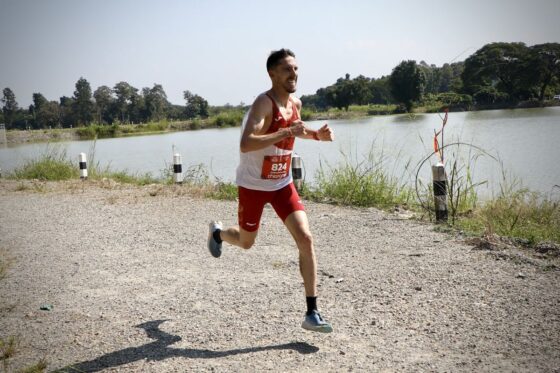
Outsole and Midsole Characteristics
The type of trail race you’re running or the terrain you train on will likely influence the type of outsole and midsole you want.
The outsole on the Hoka Tecton X 3 is fairly low profile, but the midsole stack height is too extreme to move with reliable stability over technical terrain. The North Face Vectiv Sky 2 has an aggressive lug pattern and is excellent for descending on all terrain, but the low stack and midsole may leave you hurting after a 1,000-foot descent.
The solution is to choose a shoe with outsole and midsole characteristics that match the course you’re running. When selecting a shoe, pay attention to the midsole density, midsole stack height, lug pattern, and the type of outsole rubber compound.
Why You Should Trust Us
Don’t worry; despite creating this guide for the best lightweight trail running shoes that are more appropriate for sub-ultramarathon-distance racing, we haven’t changed our name to iRunShort! Even if we are named iRunFar, we have years of experience on trails and in races of every distance.
Many runners can and will push these shoes beyond a marathon or 50-kilometer distance, but we wanted to test shoes that would be most inviting for short and steep trail running and mountain running. This is like wearing a pair of road shoes versus spikes at a track workout — different tools for different running.
We zeroed in on lightweight shoes that are more well-rounded for all kinds of trail running, instead of some shoes made traditionally just for running in mud or fell running. We left these out mainly because they are a category unto themselves.
To create this guide, we researched hundreds of shoes in the trail running space, narrowed our potential shoes to those weighing 9.5 ounces or less, and took a couple of dozen shoes into the field. We tested these shoes across the U.S.’s mountain west, primarily in Boulder and Silverton, Colorado, and Bend, Oregon.
Please note that product models are routinely discontinued in the running world, while new ones frequently come to market. At the same time, we here at iRunFar often keep using our top picks in our daily running they’re our top picks, after all! Sometimes, that continued use results in uncovering product failures. With all this — product discontinuations, product introductions, and product failures — in mind, we routinely update our buyer’s guides based on past and ongoing testing and research by our authors and editorial team. While these updates can appear to be us pushing the newest product, it’s anything but that. Most products will likely remain the same when we update any buyer’s guide. That matches our goal: to get you in the best gear you’ll use for a long time.
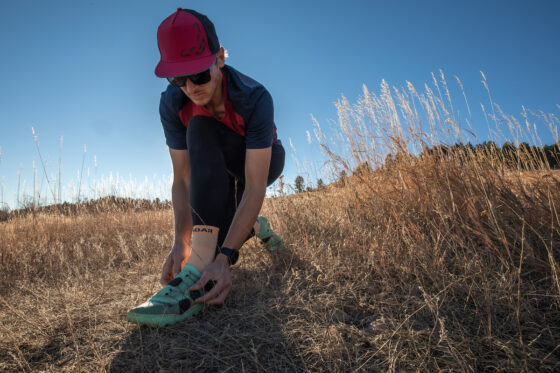
Call for Comments
- What are your favorite lightweight trail shoes?
- When do you pull out your lightweight trail shoes?
Back to Our Top Lightweight Trail Running Shoes Picks
Best Lightweight Trail Running Shoes of 2025 by Craig Randall.
🏃♂️ Recommended for Ultra Runners
As ultra runners, we’re always looking for tools and resources to support our training and racing goals. Check out this resource that fellow runners have found valuable.
FTC Disclosure: This post contains affiliate links. We may earn a commission if you purchase through these links at no additional cost to you. See our Affiliate Disclosure for details.

